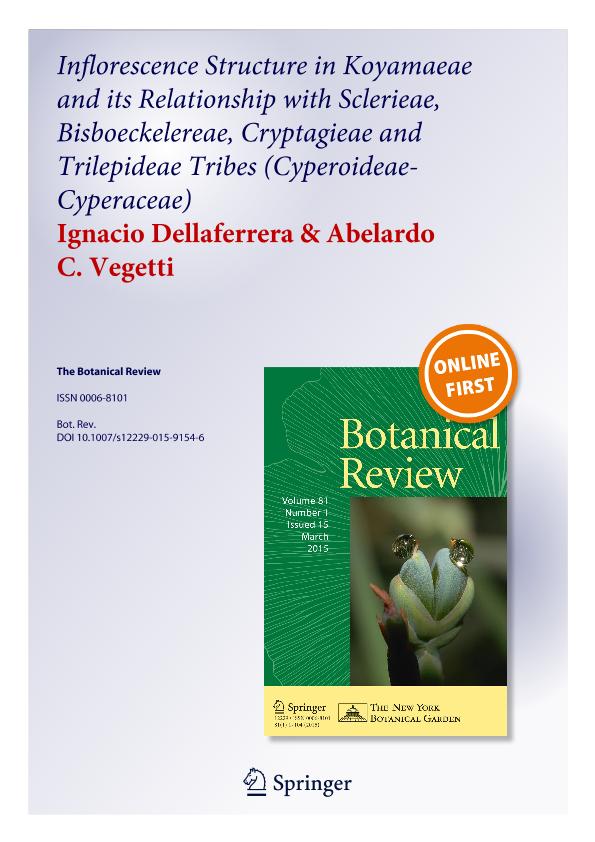Artículo
Inflorescence Structure in Koyamaeae and its Relationship with Sclerieae, Bisboeckelereae, Cryptagieae and Trilepideae Tribes (Cyperoideae-Cyperaceae)
Fecha de publicación:
06/2015
Editorial:
Springer
Revista:
Botanical Review
ISSN:
0006-8101
Idioma:
Inglés
Tipo de recurso:
Artículo publicado
Clasificación temática:
Resumen
This paper aims to interpret and characterize the inflorescence of Koyamaeae tribe from the typological point of view in order to establish homologies and promote comparative studies and the use of inflorescence characters in future phylogenetic studies. The Koyamaeae tribe is comprised of one monotypic Koyamaea W. Thomas &Davidse genus, with K. neblinensisW. Thomas&Davidse. Koyamaea neblinensis has a synflorescence type II and/or type III made up by a many-noded culm, covered by sheaths, usually unbranched (synflorescence type II), but occasionallywith 1?2 branches from the upper half (synflorescence type III). The inflorescence of Koyamaea shows a main axis leading to a terminal spikelet (main florescence) and a primary branch (primary paraclade) arising from the axillary bud of the single involucral bract. Accordingly, the inflorescence is composed of the main florescence and a highly reduced paracladial zone. This paracladial zone is reduced to one node where a single primary paraclade is inserted. This primary paraclade consists of a short hypopodium, a prophyll, an epipodium and a terminal spikelet (or coflorescence). The axillary bud of the prophyll develops a secondary branch (secondary Paraclade) with a similar structure to that of the primary paraclade. All subsequent higher-order branches also arise in the axils of prophylls. Inflorescence characters of this tribe are discussed in relation to related tribes Sclerieae, Bisboeckelereae, Cryptangieae and Trilepideae (sensu Goetghebeur, 1998).
Palabras clave:
Koyamaea
,
Cyperoideae
,
Cyperaceae
,
Inflorescence
Archivos asociados
Licencia
Identificadores
Colecciones
Articulos(CCT - SANTA FE)
Articulos de CTRO.CIENTIFICO TECNOL.CONICET - SANTA FE
Articulos de CTRO.CIENTIFICO TECNOL.CONICET - SANTA FE
Citación
Dellaferrera, Ignacio Miguel; Vegetti, Abelardo Carlos; Inflorescence Structure in Koyamaeae and its Relationship with Sclerieae, Bisboeckelereae, Cryptagieae and Trilepideae Tribes (Cyperoideae-Cyperaceae); Springer; Botanical Review; 81; 2; 6-2015; 179-188
Compartir
Altmétricas




